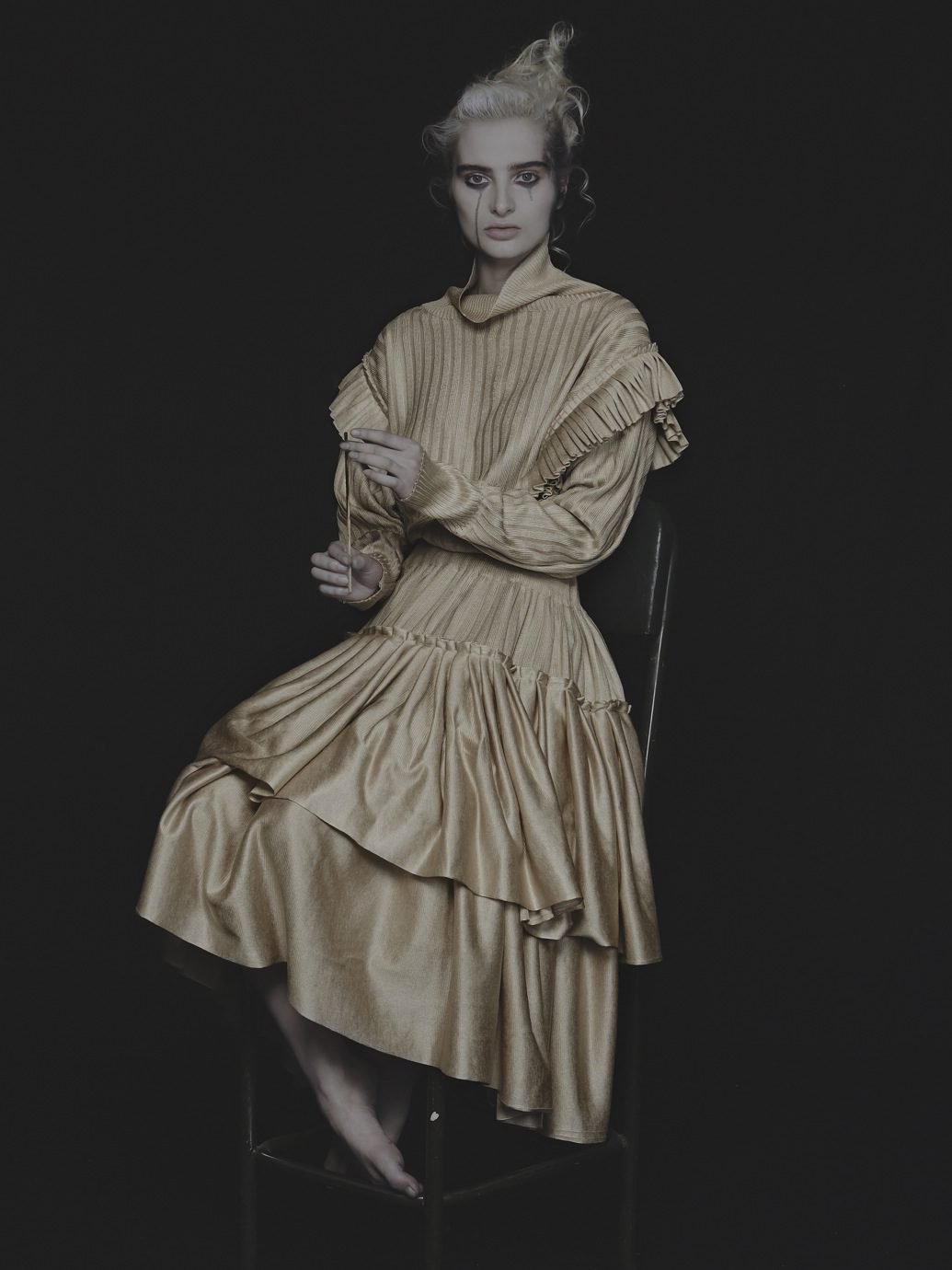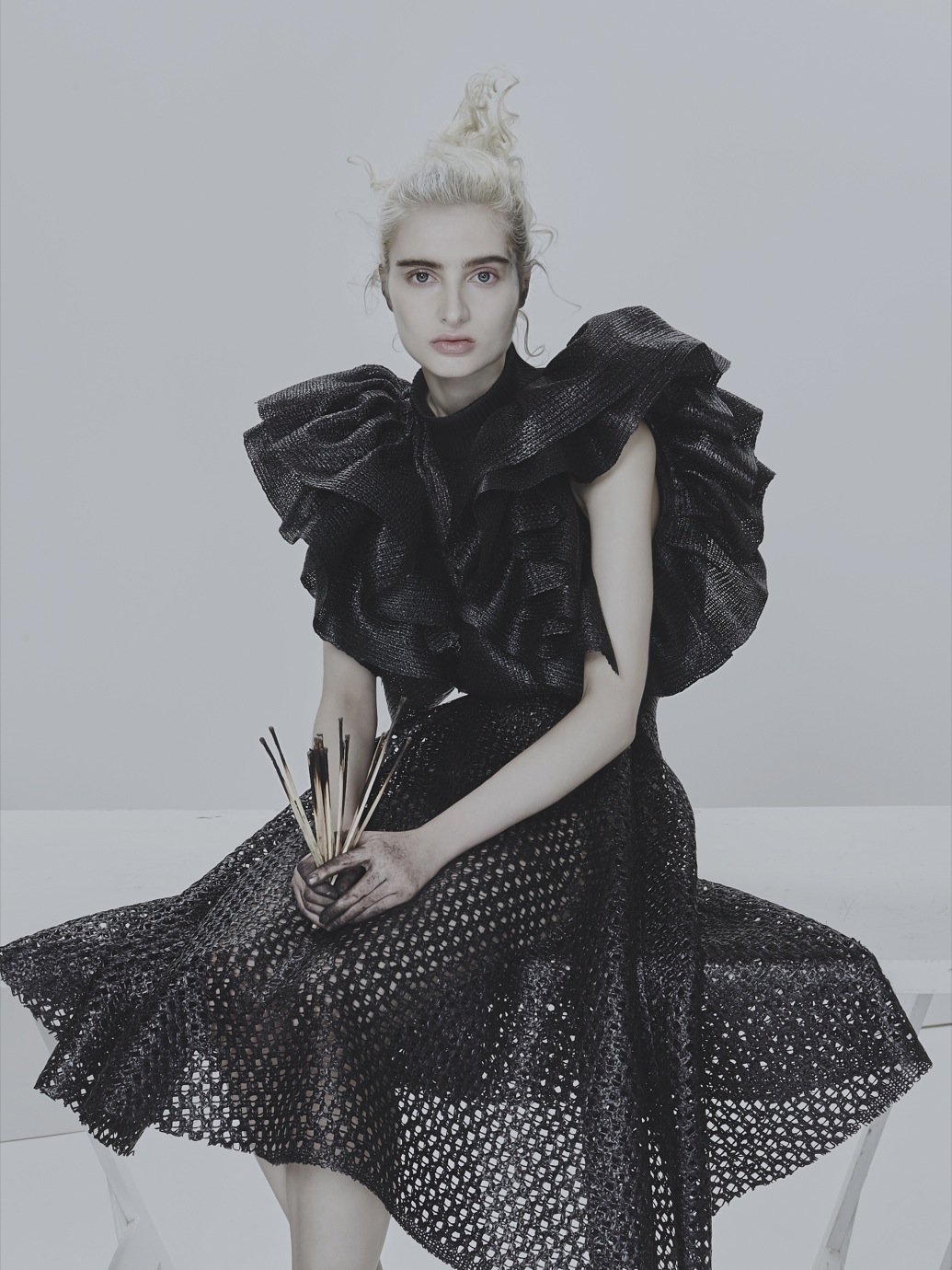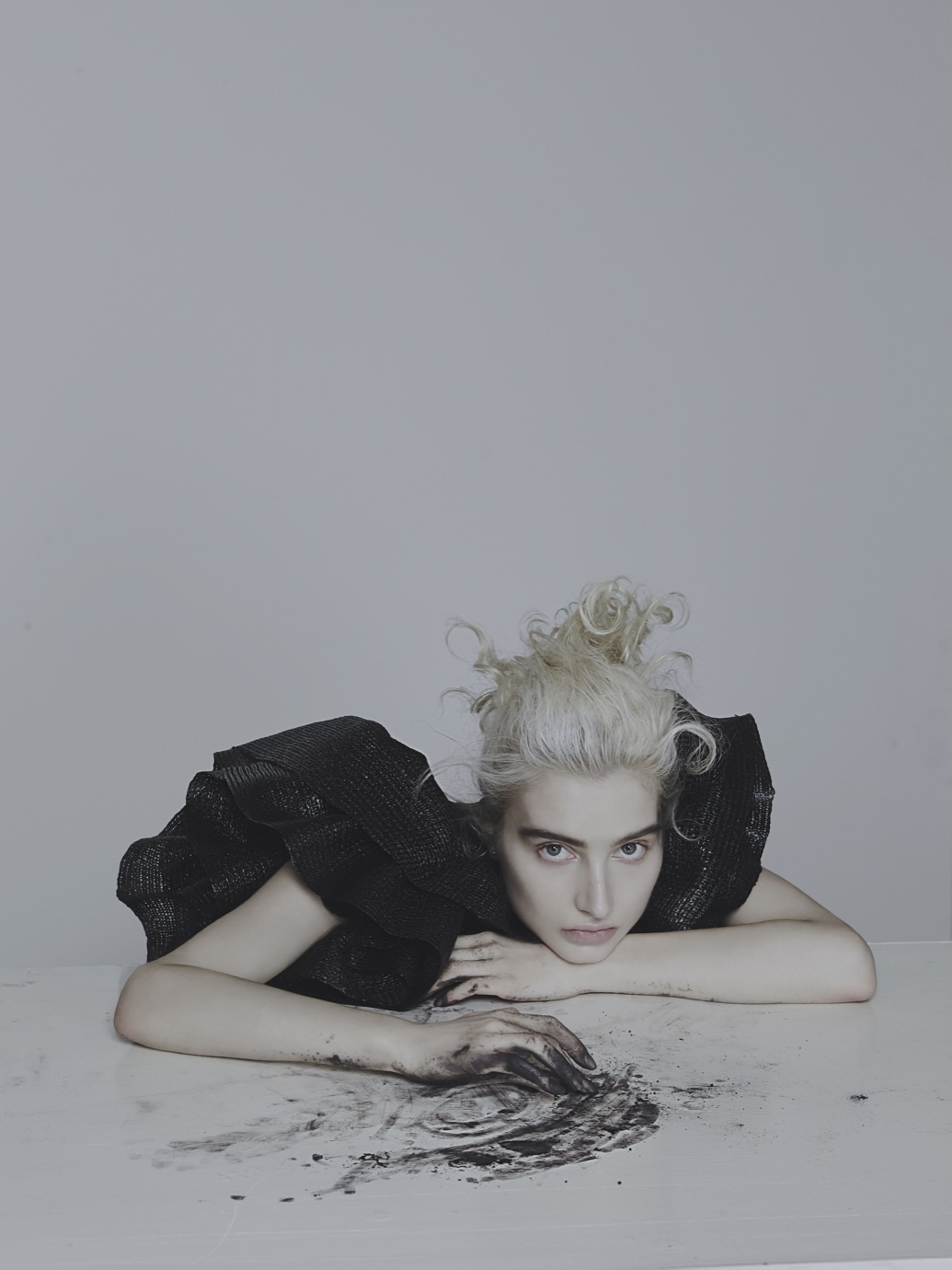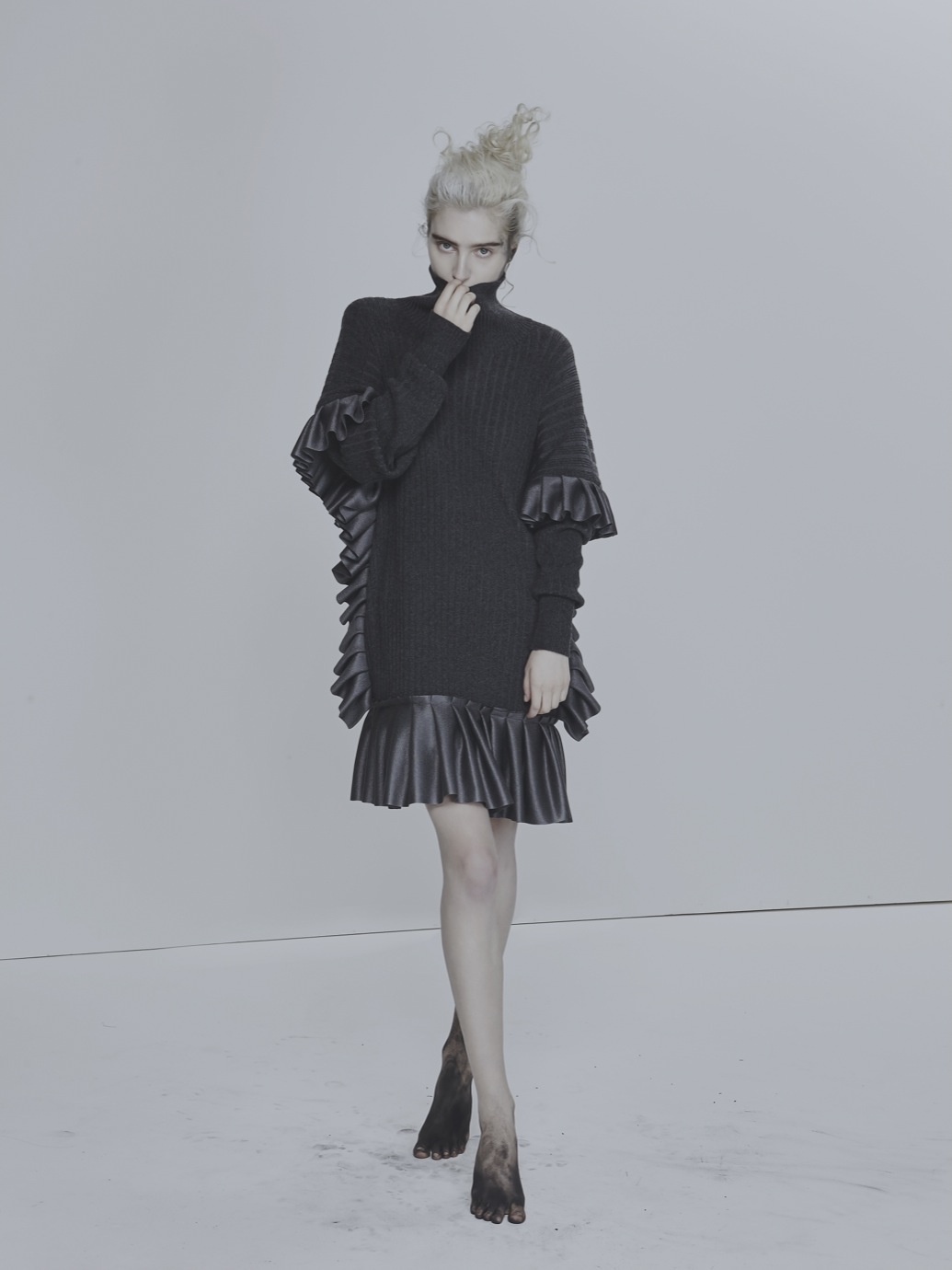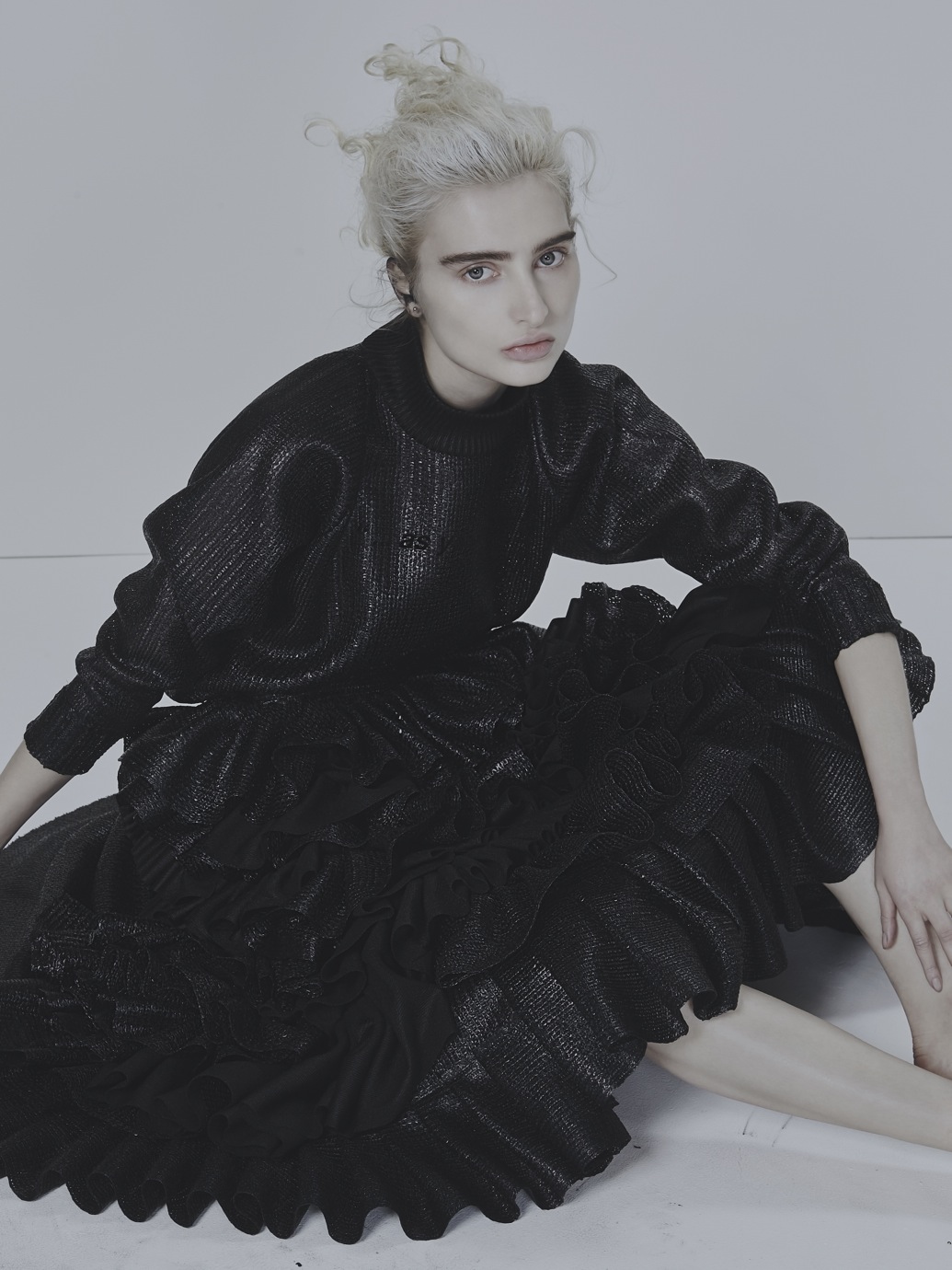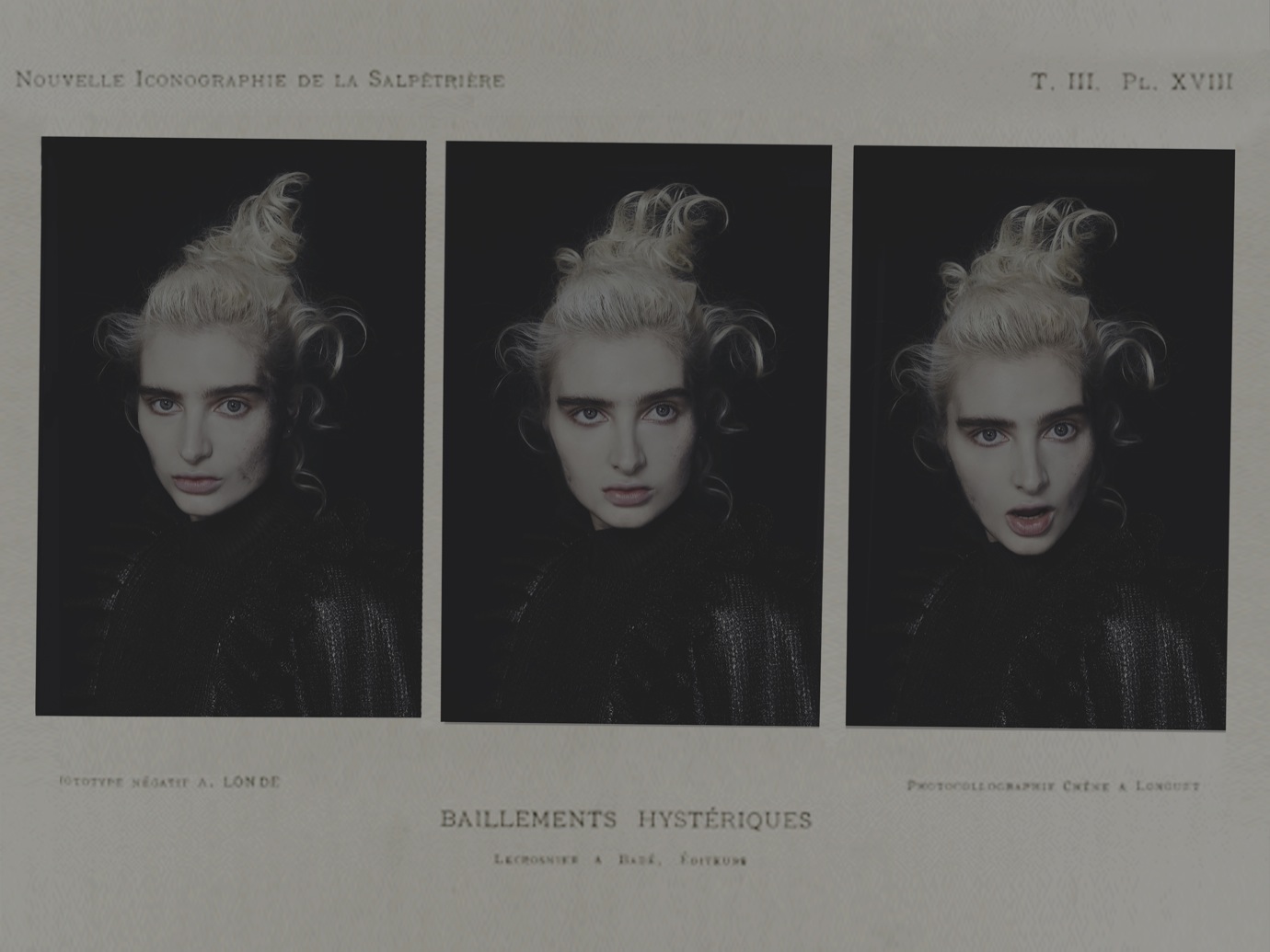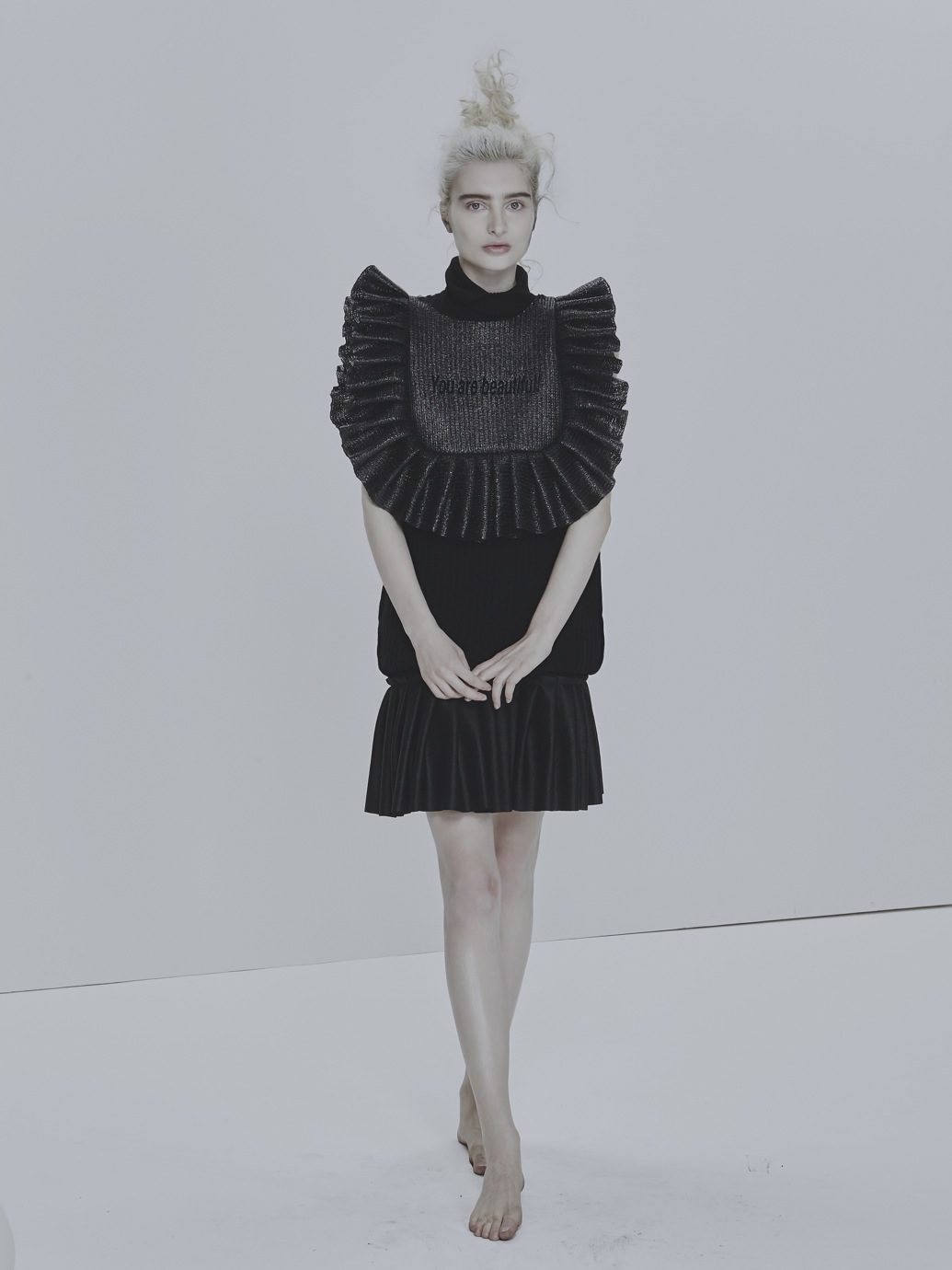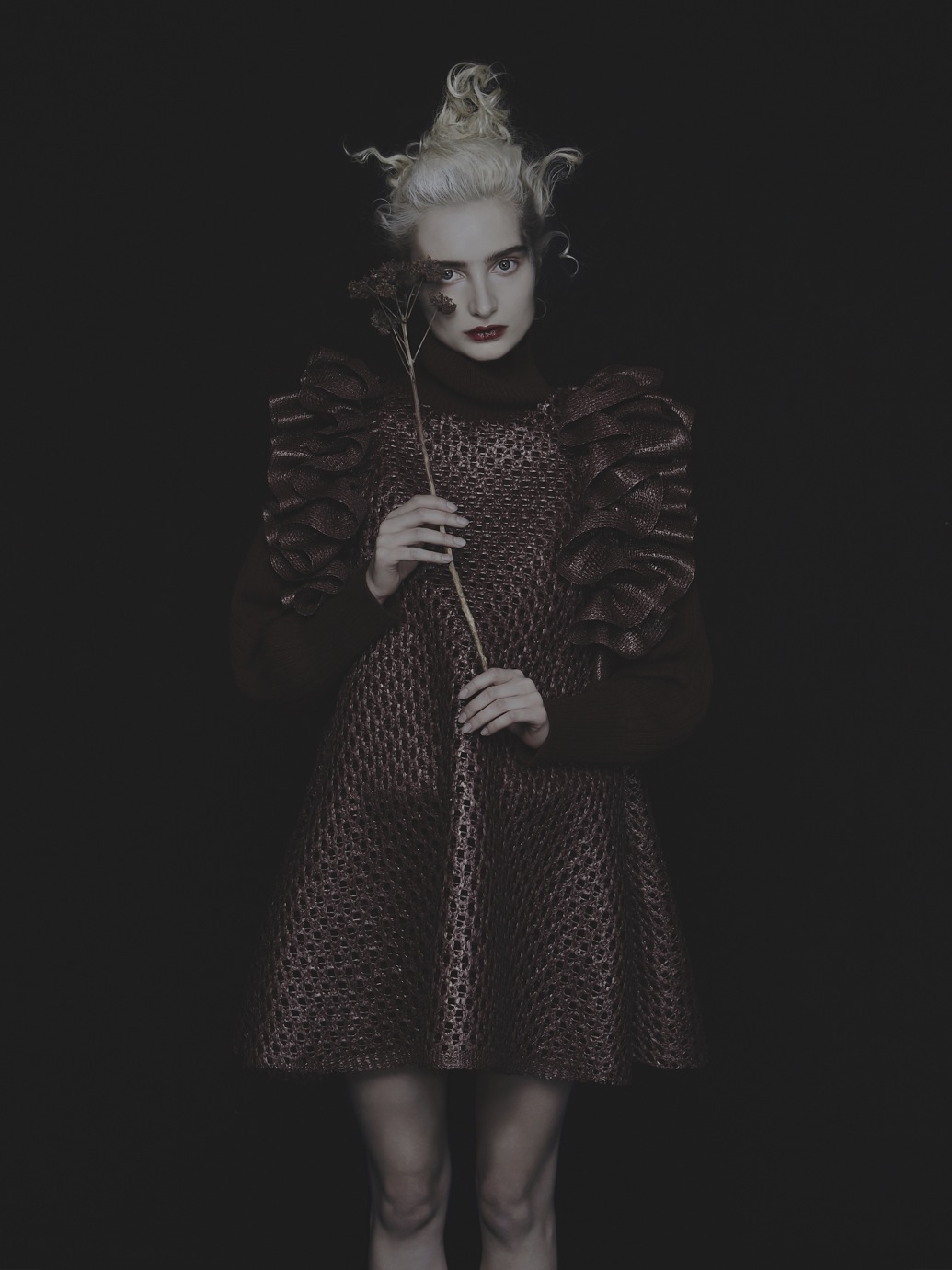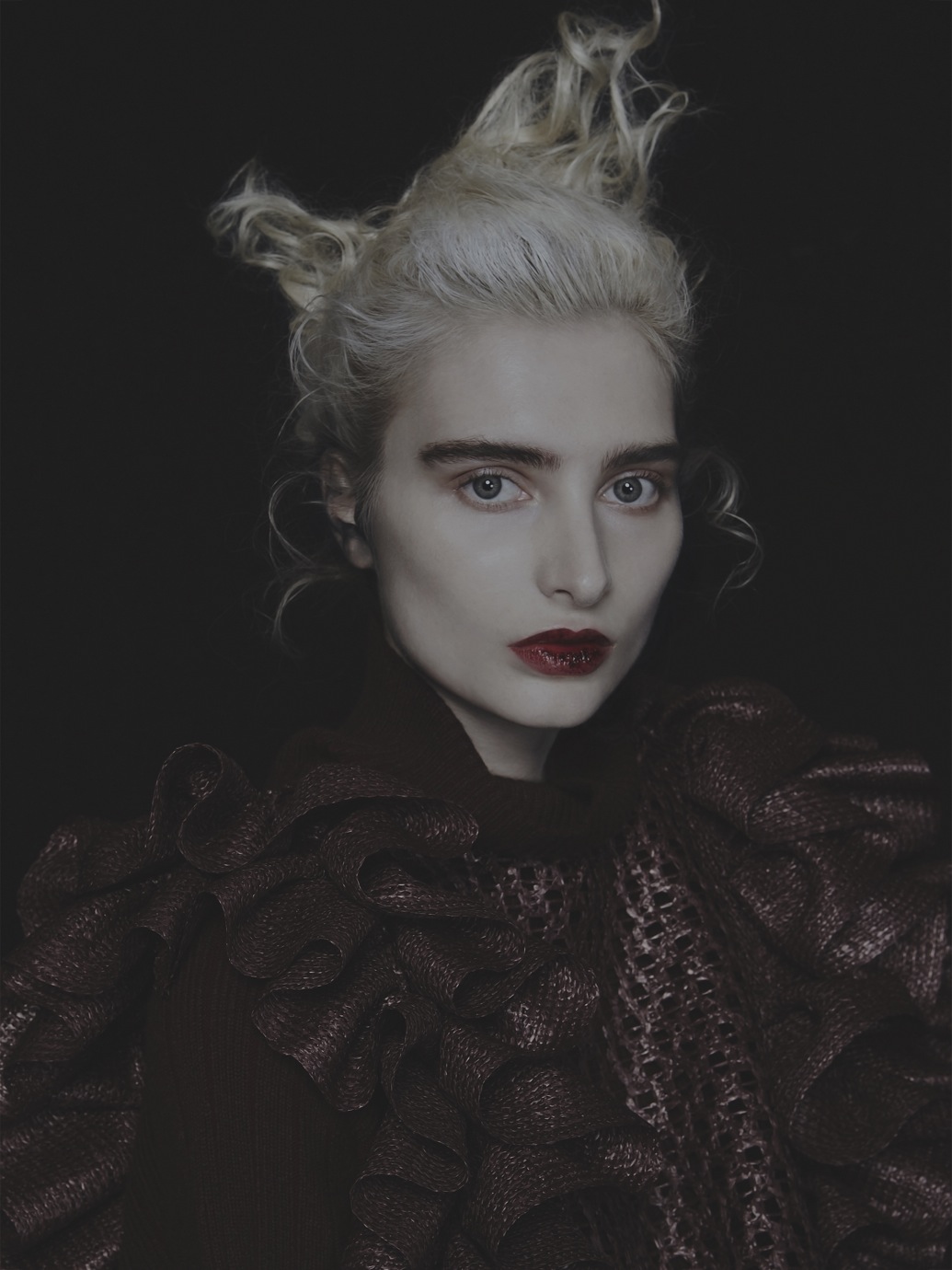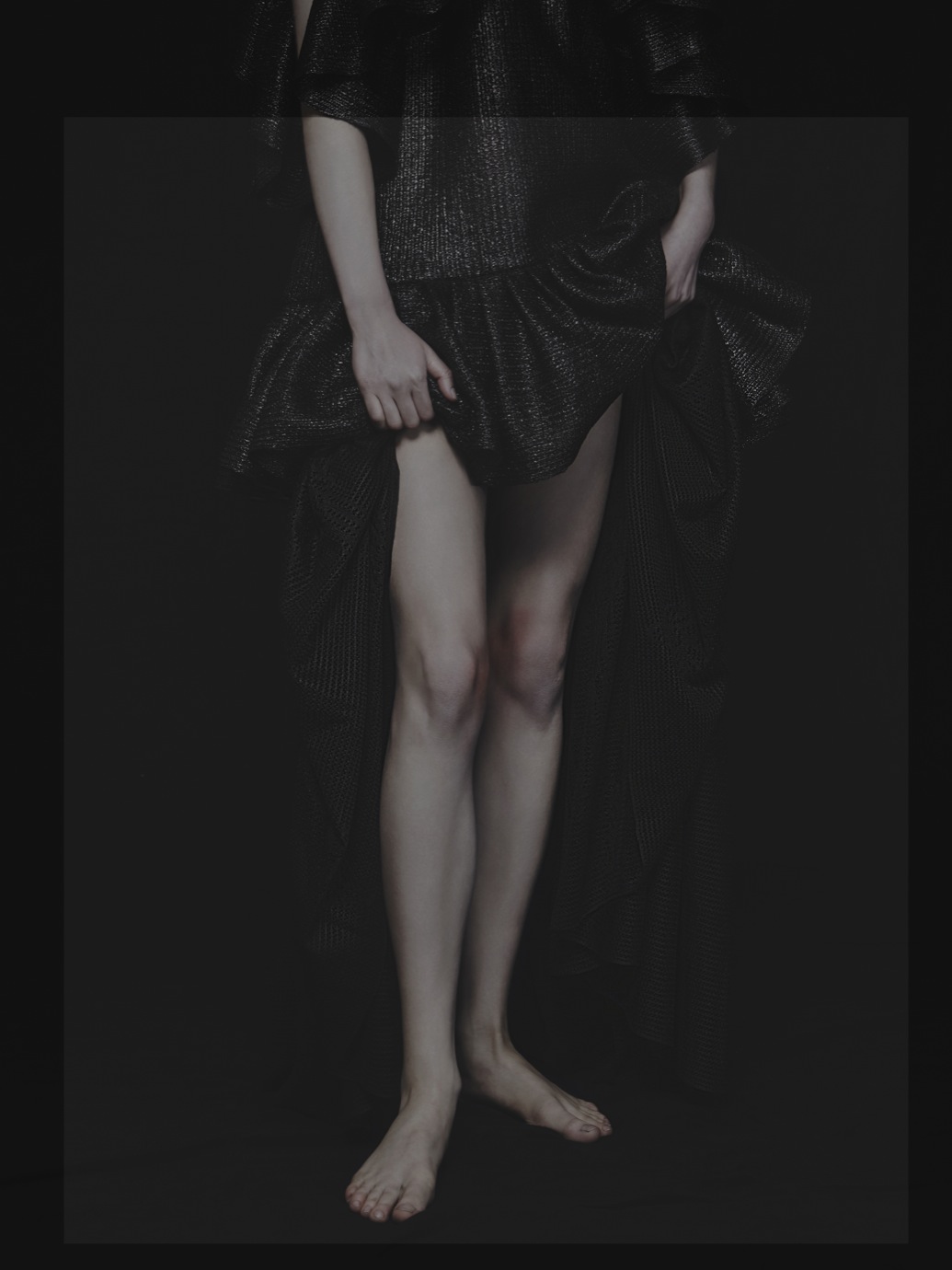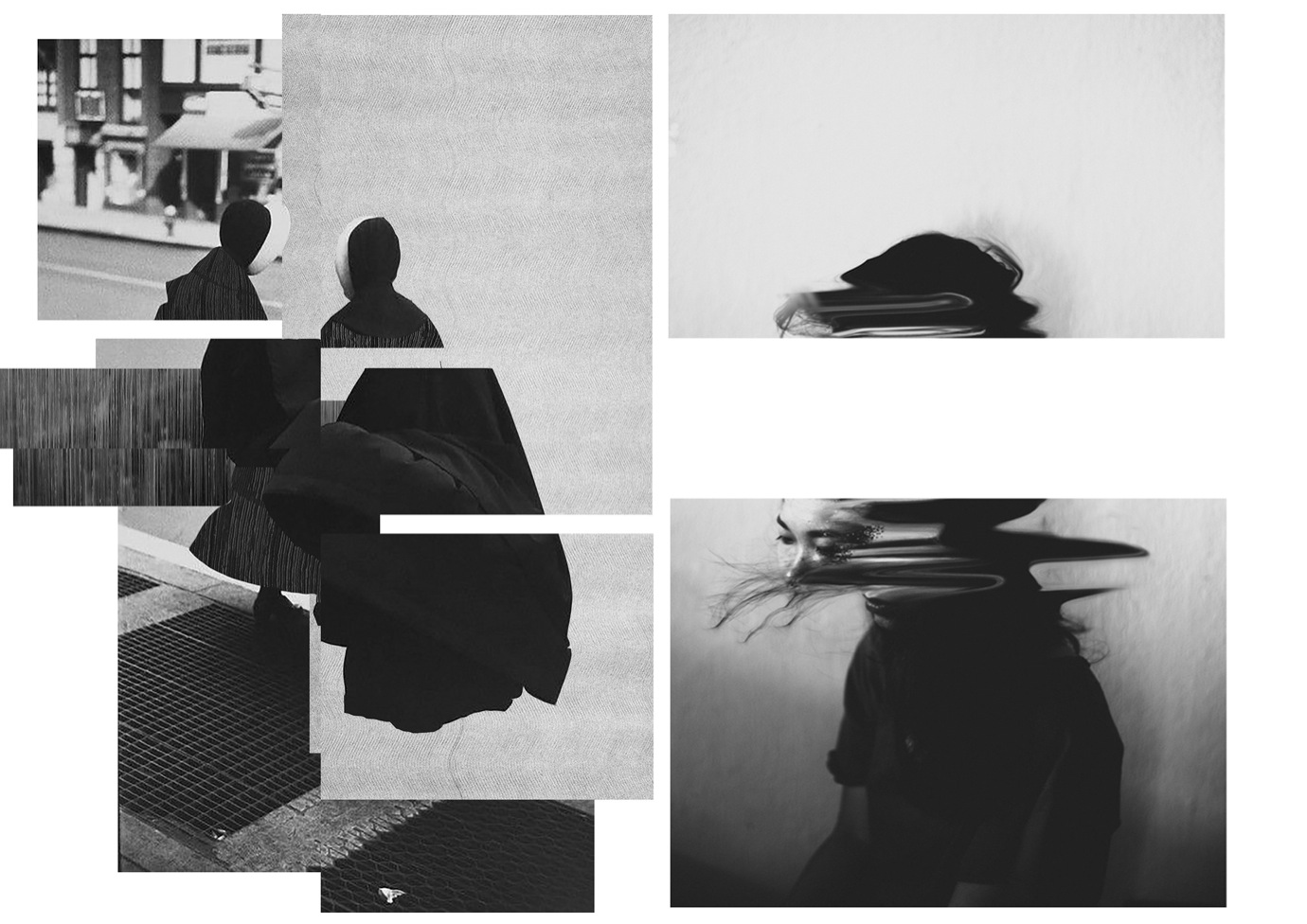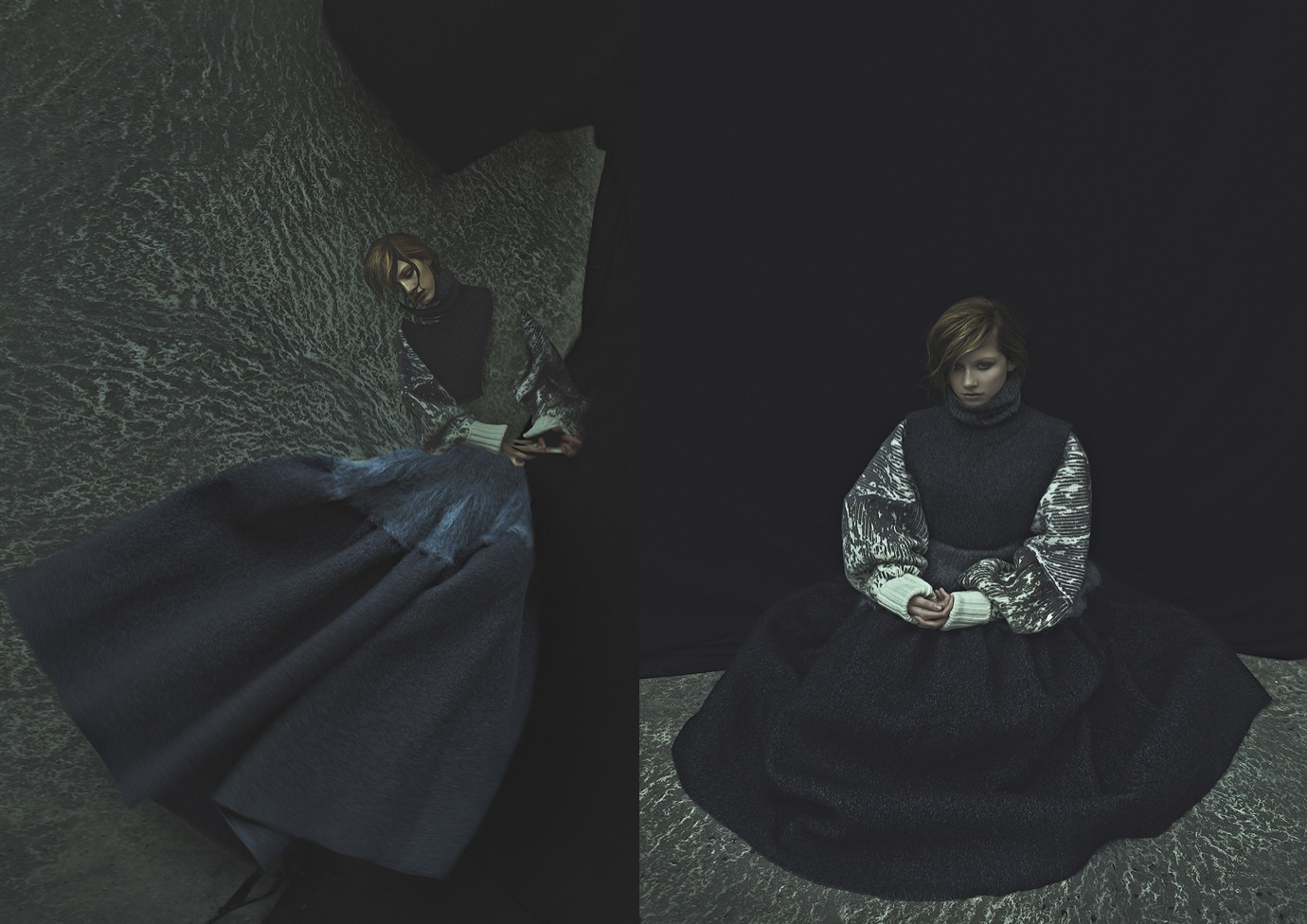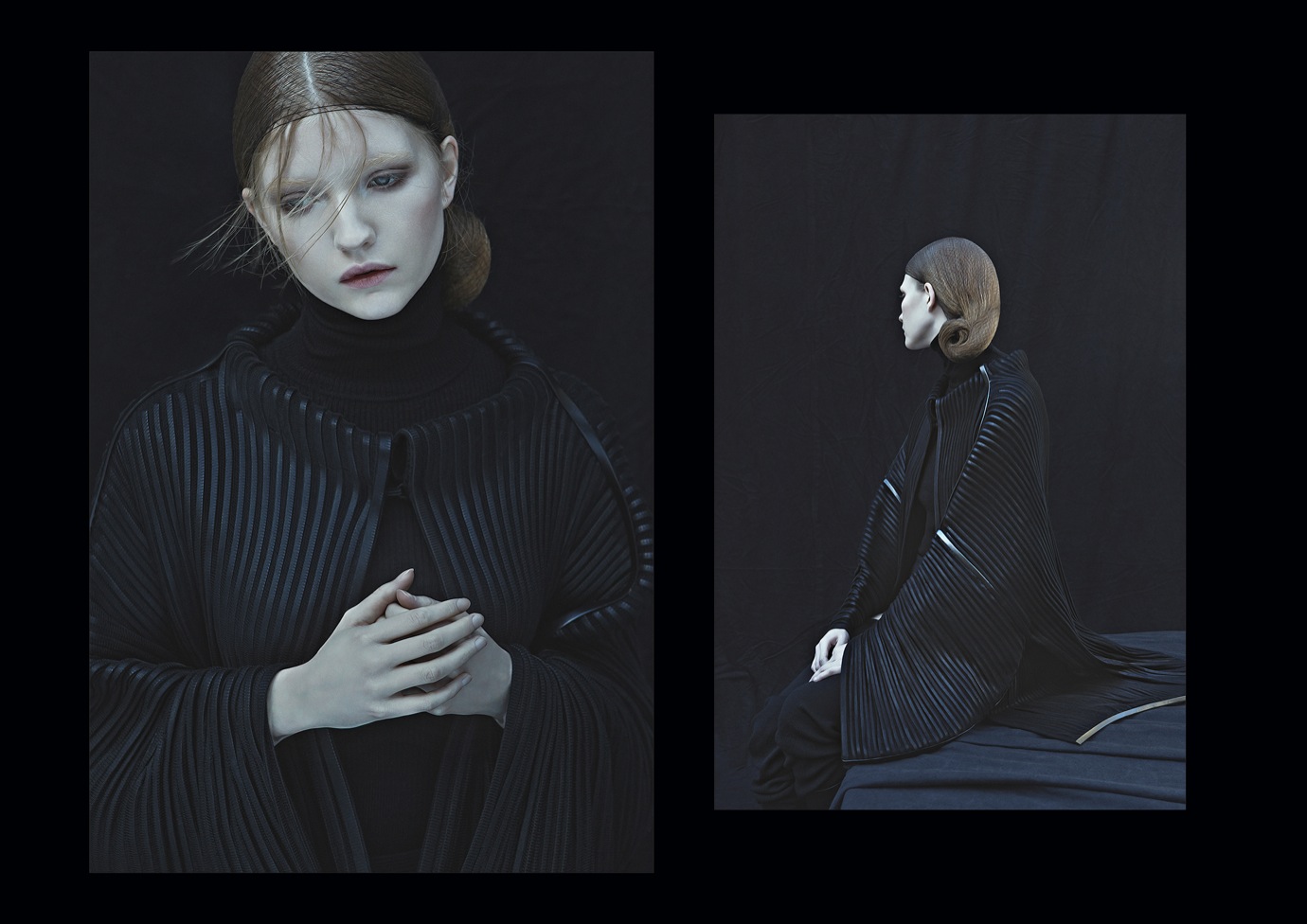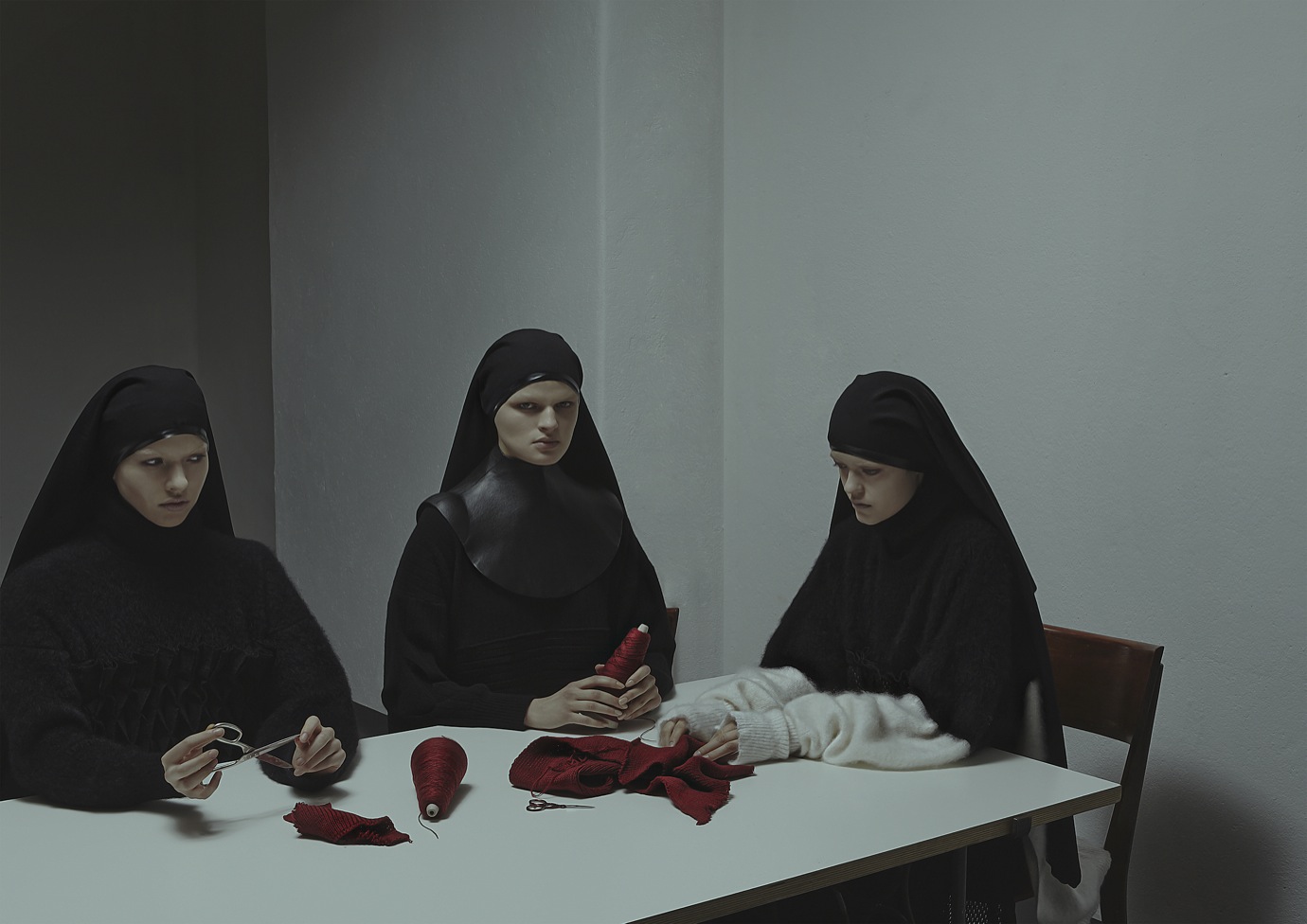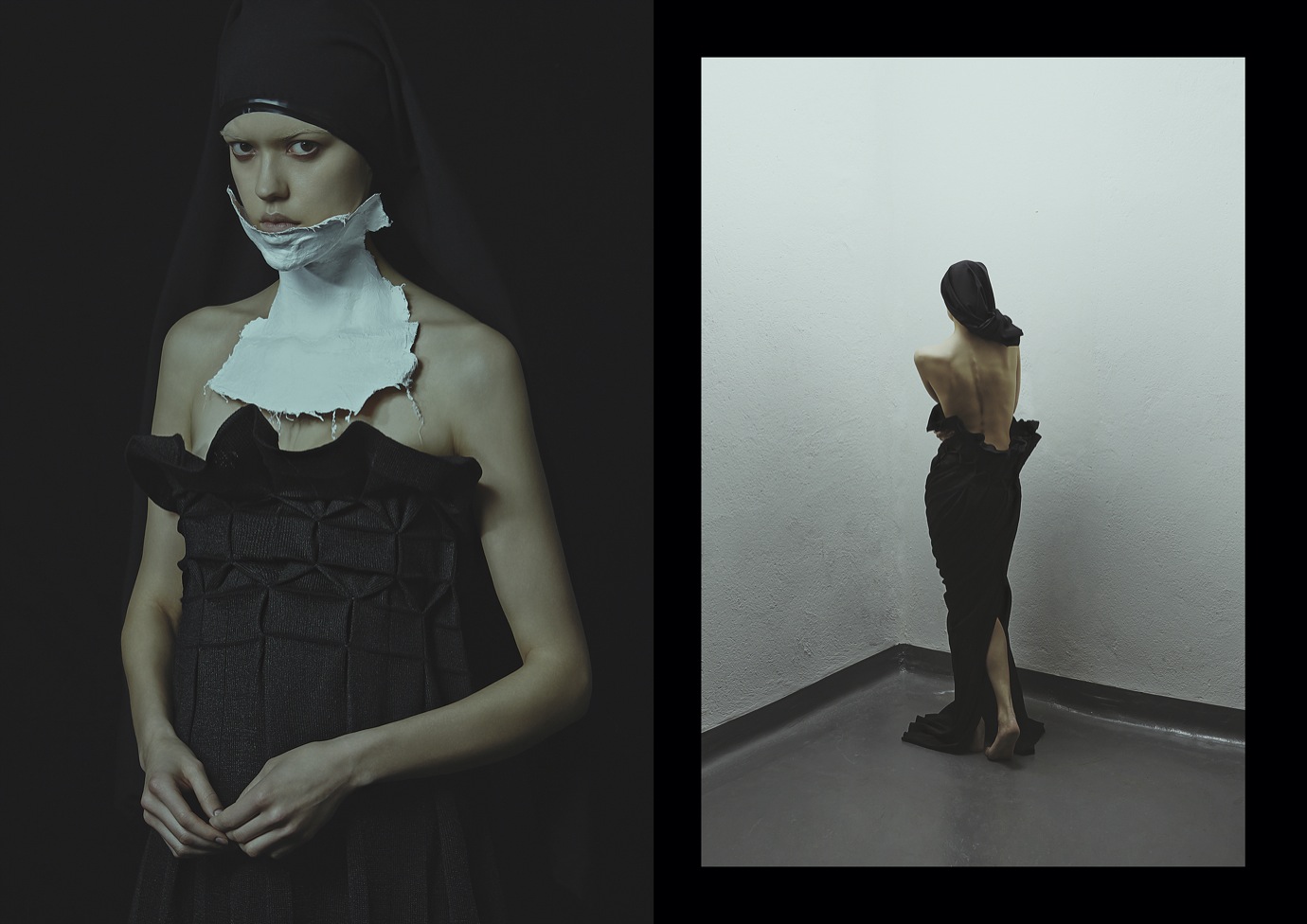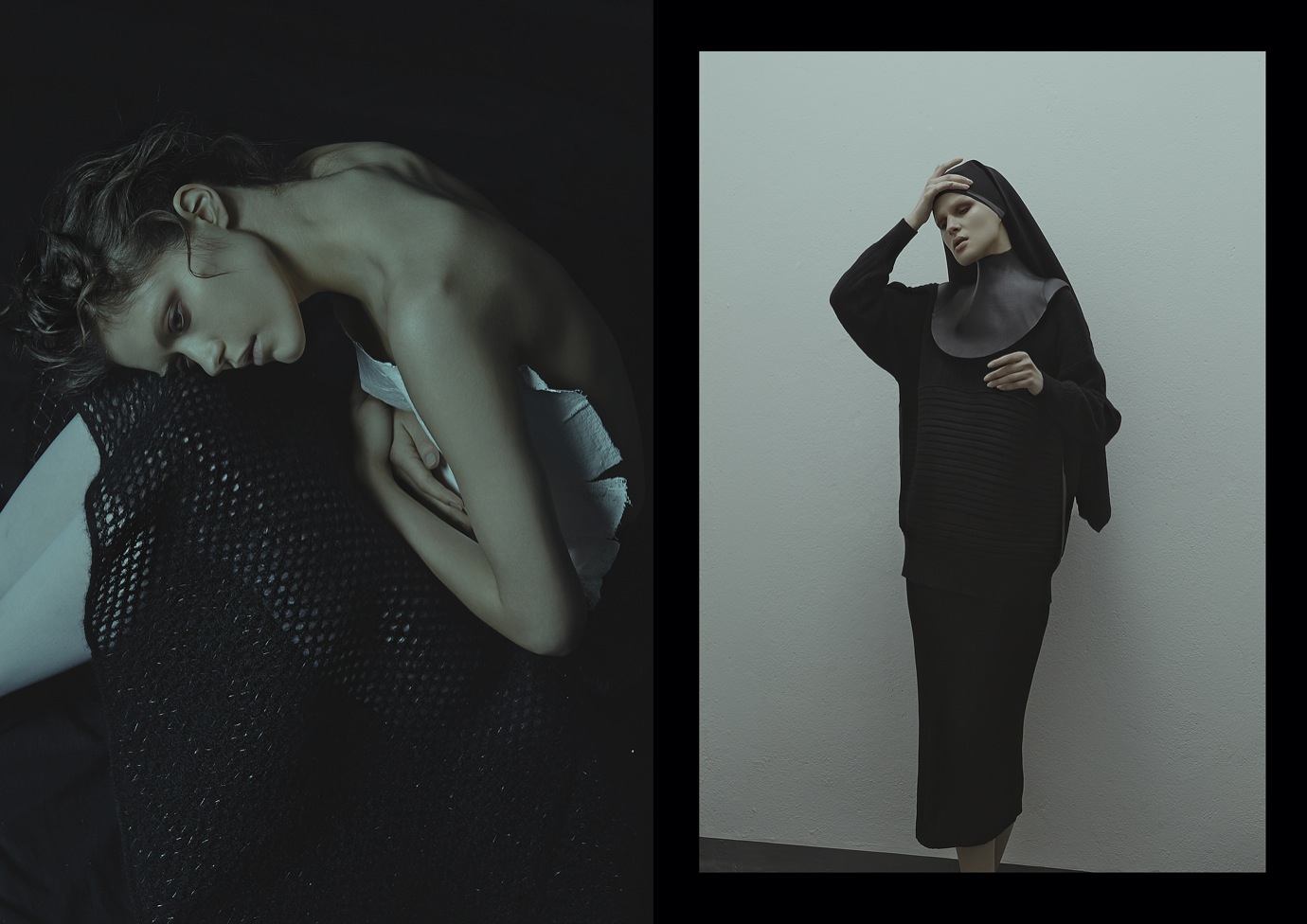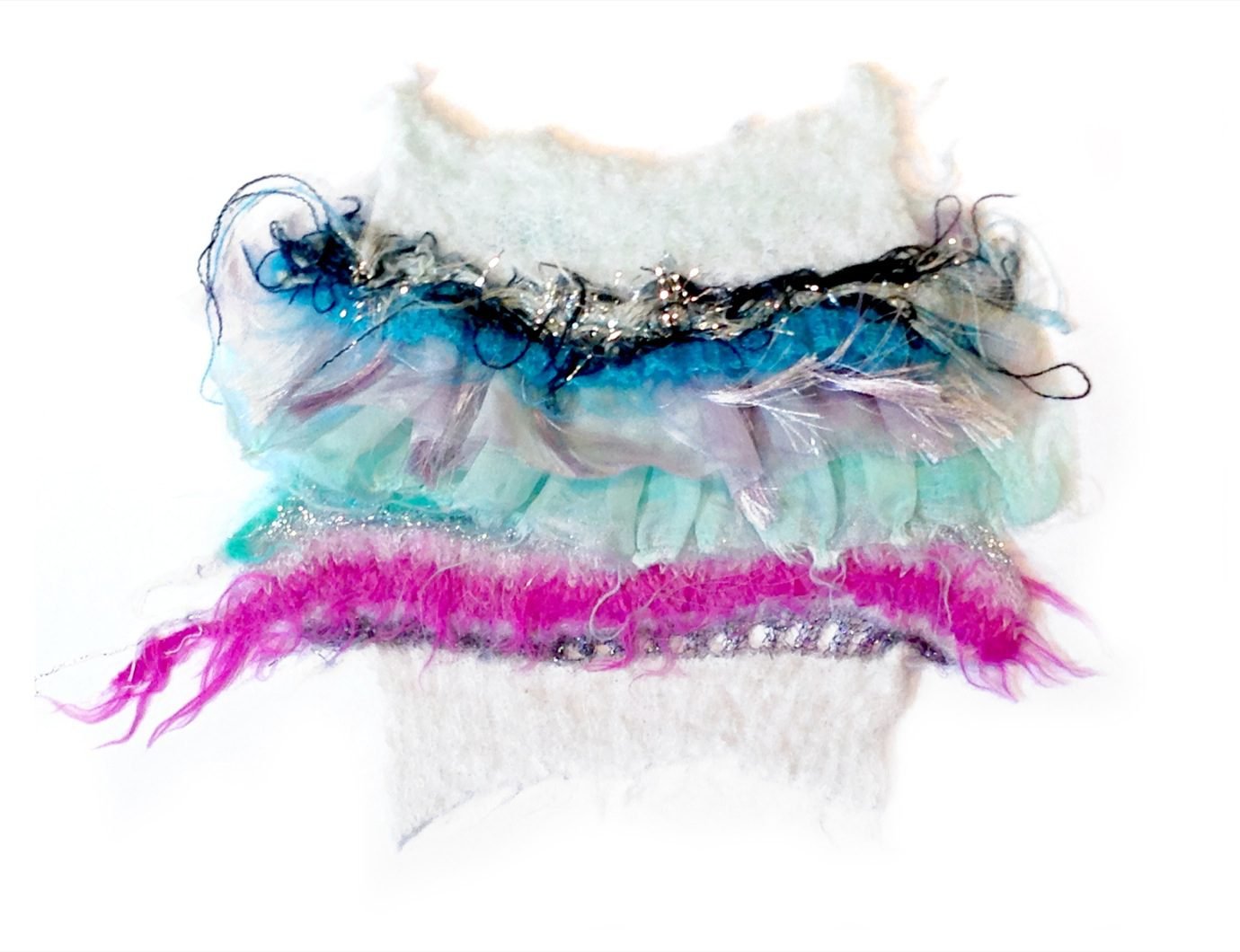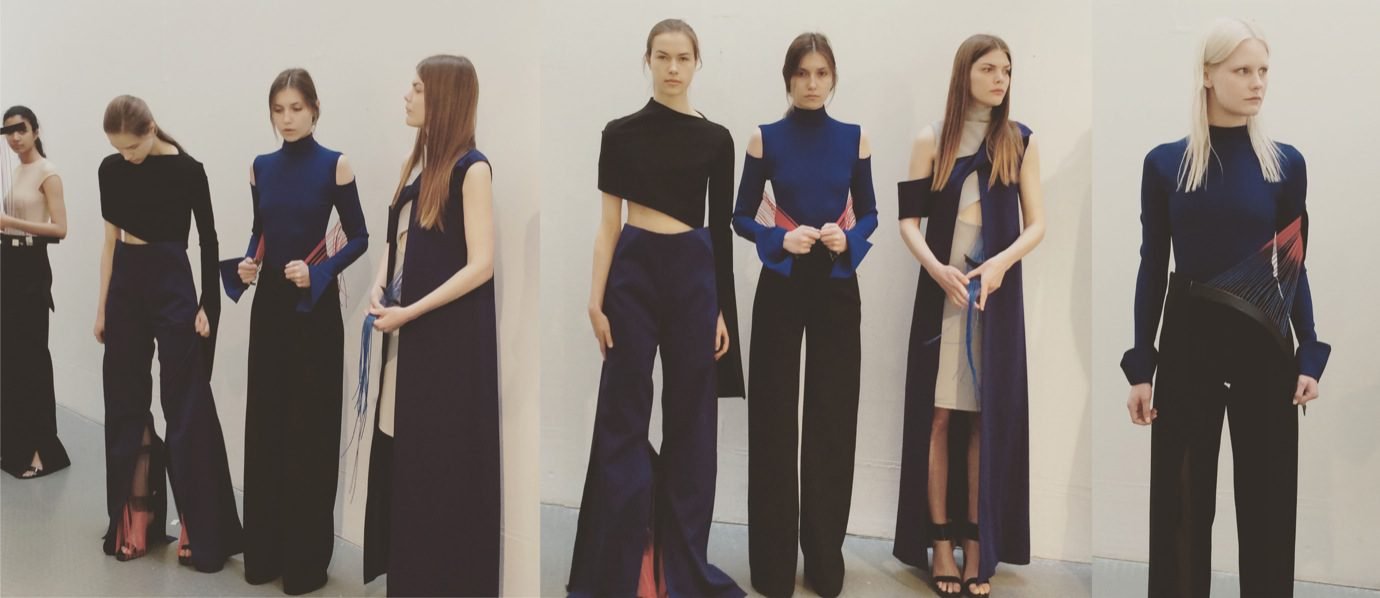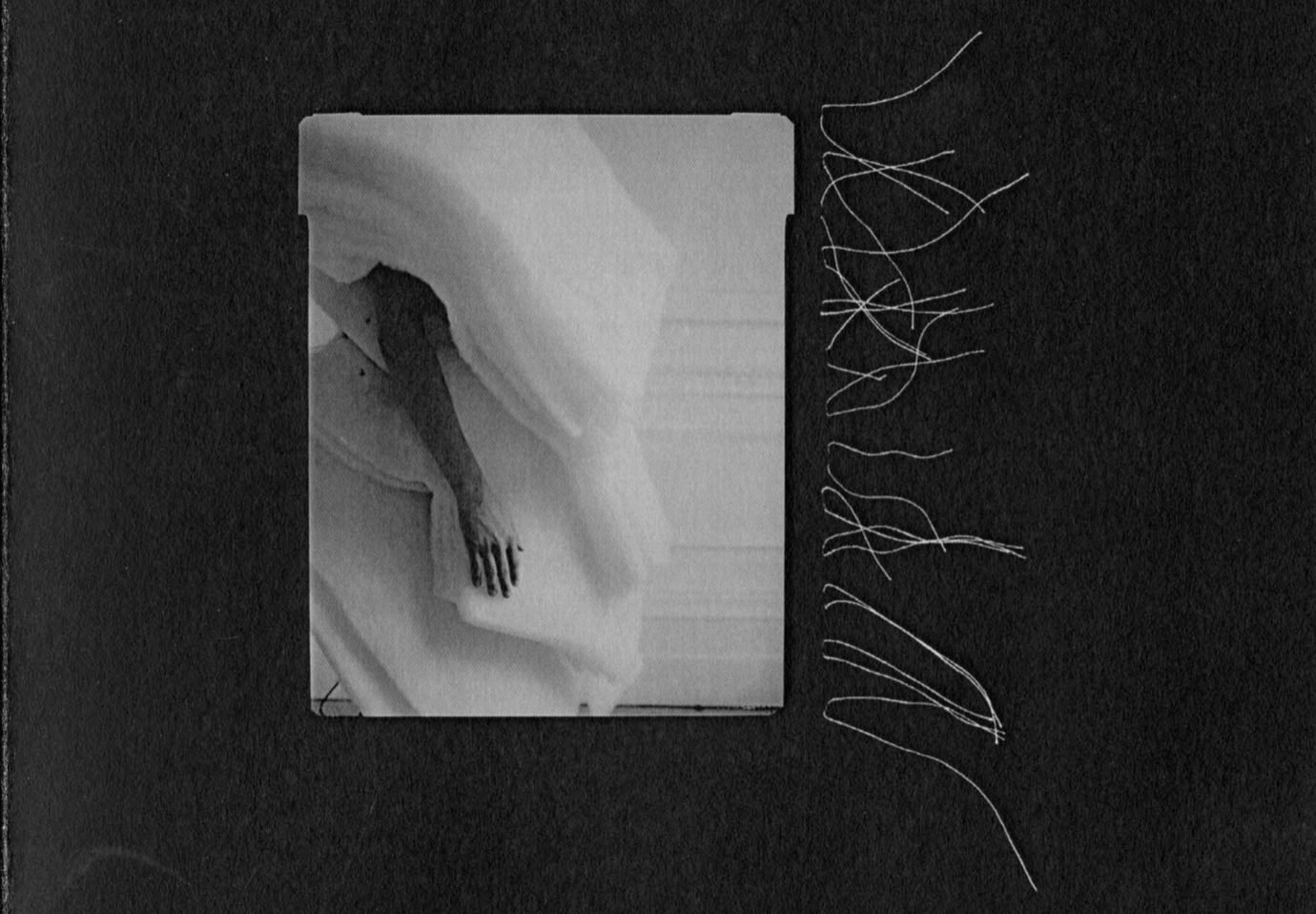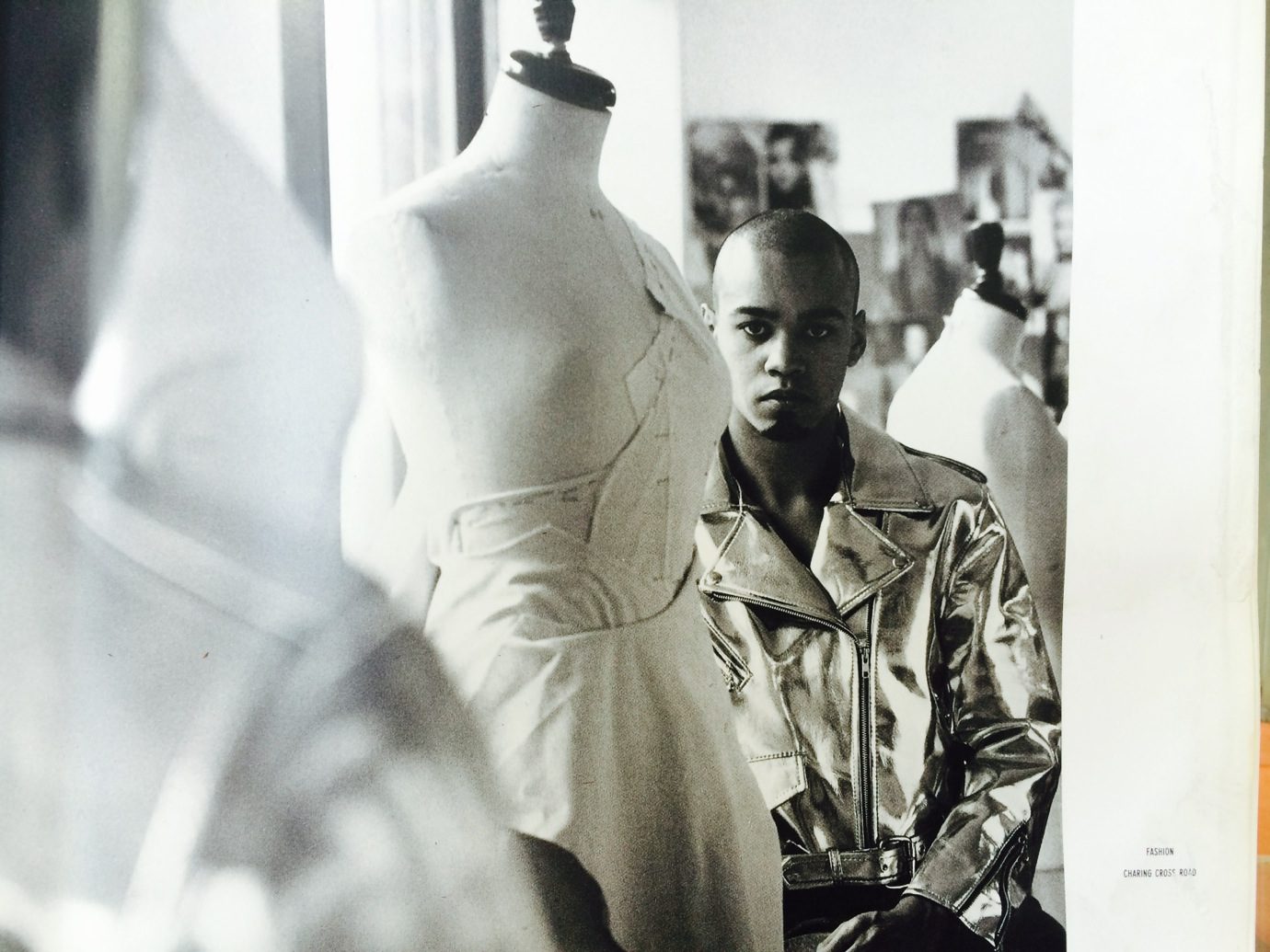Traditional yarn and techniques were used for this modern knitwear collection. Cashmere, mohair and wool were then assorted to less traditional materials such as polyester or nylon. The latters are often melted in a heat press rolling machine to create a shiny effect, making the knitwork invisible. E Wha Lim spent a lot of time at the RCA yarn store experimenting with samples, textures and melting temperatures. Approaching 200 degrees made the mesh crispy and breakable, whereas lowering it to 100 degrees ensured a strong shine with the compromise of flexibility. She now sources the finest yarn from premium Italian companies she personally visited during her travels. As for the color palette: burgundy, dark red, black and navy blue are borrowed from Leonardo Da Vinci’s Virgin of the Rocks, but some colors were “twisted” by making them shiny and evocative of latex. The ruffles of one dress required an impressive 12 meters of melted bright golden polyester.
Once she has chosen the mood she wants to achieve, her creative process involves the gathering of all samples and sketches in front of her – standing up on a table if necessary. She then “visually connects” colors, designs and textures. “You can work with soft fluffy cashmere and then choose to match it with its complete opposite: nylon. Or start with something close-fitting and then add a thousand ruffles. It’s also about having fun with the designs!” Special attention is then paid to styling. Her eye was trained by a year spent at Dazed’s styling department, where she drew inspiration from senior stylists who would quickly and spontaneously reinvent an outfit, instantly recognizing fit, proportion and balance in clothes and accessories. She also ultimately expects people wearing her clothes to “wear them their own way” – be it as undergarments or outer pieces, accessorized or mixed with other brands.
“YOU DON’T HAVE TO FOLLOW THE STRICTEST RULES JUST BECAUSE YOU BELIEVE IN GOD.”

